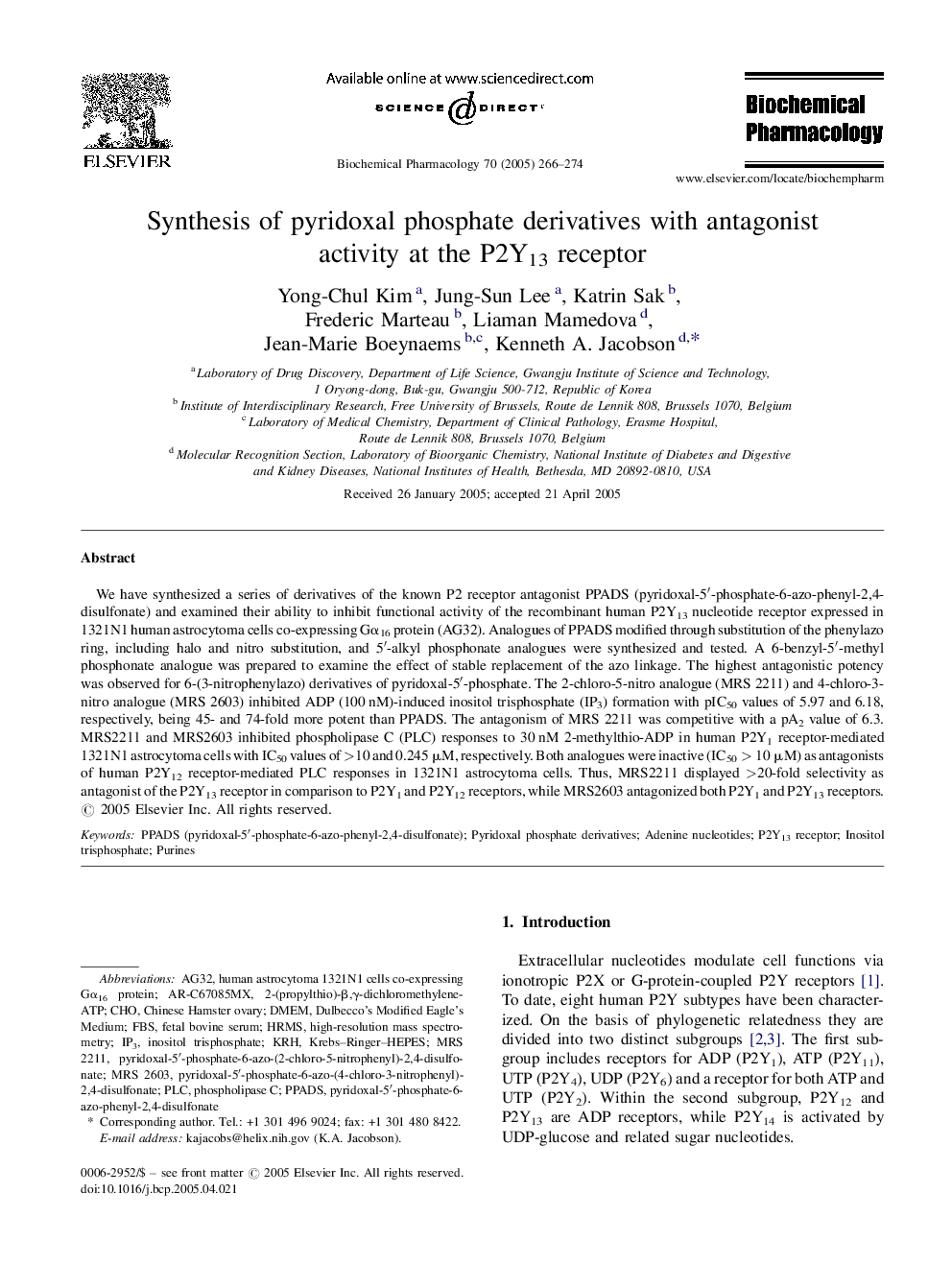| Article ID | Journal | Published Year | Pages | File Type |
|---|---|---|---|---|
| 9001920 | Biochemical Pharmacology | 2005 | 9 Pages |
Abstract
We have synthesized a series of derivatives of the known P2 receptor antagonist PPADS (pyridoxal-5â²-phosphate-6-azo-phenyl-2,4-disulfonate) and examined their ability to inhibit functional activity of the recombinant human P2Y13 nucleotide receptor expressed in 1321N1 human astrocytoma cells co-expressing Gα16 protein (AG32). Analogues of PPADS modified through substitution of the phenylazo ring, including halo and nitro substitution, and 5â²-alkyl phosphonate analogues were synthesized and tested. A 6-benzyl-5â²-methyl phosphonate analogue was prepared to examine the effect of stable replacement of the azo linkage. The highest antagonistic potency was observed for 6-(3-nitrophenylazo) derivatives of pyridoxal-5â²-phosphate. The 2-chloro-5-nitro analogue (MRS 2211) and 4-chloro-3-nitro analogue (MRS 2603) inhibited ADP (100 nM)-induced inositol trisphosphate (IP3) formation with pIC50 values of 5.97 and 6.18, respectively, being 45- and 74-fold more potent than PPADS. The antagonism of MRS 2211 was competitive with a pA2 value of 6.3. MRS2211 and MRS2603 inhibited phospholipase C (PLC) responses to 30 nM 2-methylthio-ADP in human P2Y1 receptor-mediated 1321N1 astrocytoma cells with IC50 values of >10 and 0.245 μM, respectively. Both analogues were inactive (IC50 > 10 μM) as antagonists of human P2Y12 receptor-mediated PLC responses in 1321N1 astrocytoma cells. Thus, MRS2211 displayed >20-fold selectivity as antagonist of the P2Y13 receptor in comparison to P2Y1 and P2Y12 receptors, while MRS2603 antagonized both P2Y1 and P2Y13 receptors.
Keywords
Related Topics
Health Sciences
Pharmacology, Toxicology and Pharmaceutical Science
Pharmacology
Authors
Yong-Chul Kim, Jung-Sun Lee, Katrin Sak, Frederic Marteau, Liaman Mamedova, Jean-Marie Boeynaems, Kenneth A. Jacobson,
